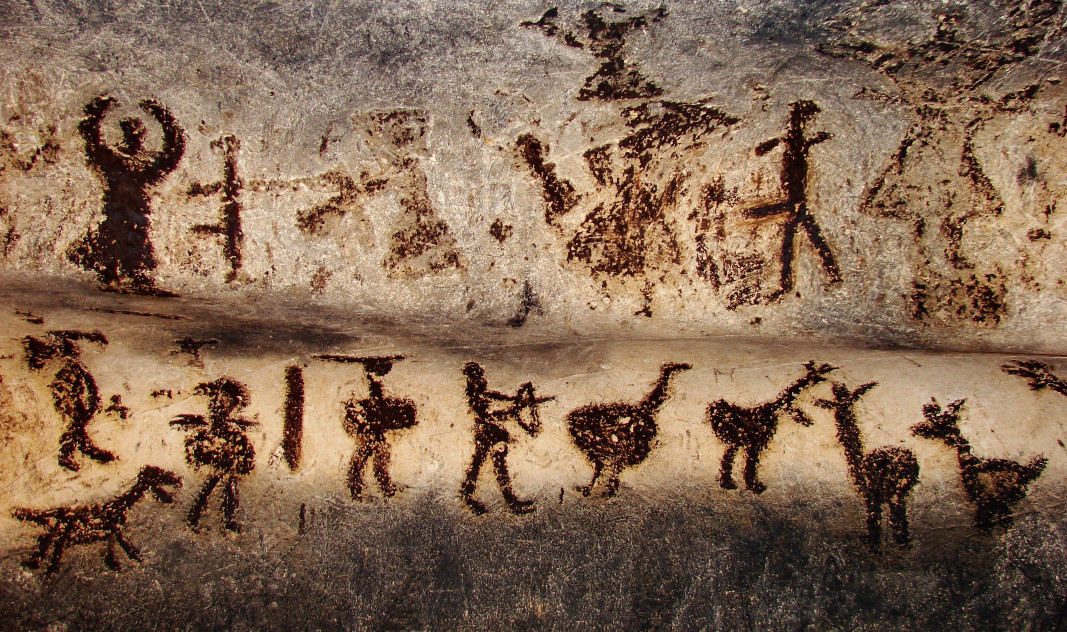At the height of the summer tourist season, the Magura Cave welcomes an average of 1,000 to 1,500 people per day. The natural and archaeological landmark, located not far away from the city of Belogradchik, has colossal dimensions and resembles an underground cathedral. Tourists visit 5 of the 23 halls of the cave, characterized by its beautiful formations.
Here one can see the largest cave column in Bulgaria, which is 20 meters high. But what makes the cave unique are the ancient drawings on the walls, considered to be some of the earliest in Europe. Experts define them as unsurpassed examples of prehistoric art.

These days the Magura Cave is more attractive and tourist-friendly than ever thanks to a European cross-border cooperation project between Bulgaria and neighboring Serbia. Holograms and interactive displays have been installed, as well as maps with augmented reality, providing 3D images and videos about life in the cave, about the cave drawings and the rich cave flora and fauna.
The hundreds of ancient drawings on the walls tell about the life and beliefs of our distant ancestors. According to some studies, the drawings are more than 10,000 years old, but others claim that they are much older.
"The drawings can be found up to 350 meters inside the cave, where the human presence was," tour guide Ventsislav Dimitrov says. "People went in with torches to paint because the limestone rock there is more specific and is like a board. This cave gallery is completely dry and there is no humidity inside of it. If there was moisture, these drawings would have disappeared. There are 8 natural holes in the rock. And as people passed by with the torches, the smoke came out through the holes. One of the most important drawings is the so-called Solar Calendar, in which a grouping of figures represent the days and months and we can see 366 days and 13 months. The Hunting Scene is very interesting. In it we can see wild animals - goats, deer, turkeys, as well as one of the first domesticated dogs. The oldest drawings were painted with ochre, while later drawings we created with bat guano and that is how their age can be determined. The depictions of the Mother Goddess and of women dancing with their arms raised are fascinating.”

In cult scenes, women are represented being taller than men because this was the time of matriarchy. Numerous remains of bones of ancient animals were also found in the cave, as well as traces of dwelling spaces, tools, primitive kitchen utensils, etc.
"The first hall is 21 meters high and is called the ‘Triumphal Hall’. The dwelling places of the ancient people were there. Traces of furnaces have been found. After hunting, when the men brought the game to be prepared for eating, it was a kind of triumph for them and that's why we named the hall that way," Ventsislav Dimitrov says.
The constant temperature of 12 °C provides ideal conditions for aging wine. That's why a wine cellar is located in one of the cave galleries. During the 20th century the so-called third gallery of the Magura Cave used to be a sanatorium, because the cave is saturated with potassium ions:

"This helps in the treatment of lung diseases and asthma,” Dimitrov says. “The gallery itself, where the hospital was located, gives the feeling that you are entering salt rooms. The hospital operated from 1972 to 1976 and was a huge success. There were 30 to 35 beds inside. The patients stayed in it for half an hour a day over a period of two weeks."
Magura is one of the largest caves in Bulgaria. Its formation started 15 million years ago and the galleries are more than 2,500 meters long. Nowadays, the cave is protected by UNESCO as a natural landmark and is included at number 14 in the list of "100 National Tourist Sites" of Bulgaria.
See also:
Photos: Veneta Nikolova
English: Alexander Markov
Located in the Northwestern portion of Mount Rila in the valley of the River Malyovitsa, the mountain hut called Malyovitsa is among the most popular huts for hikers in Bulgaria. There they can take a breather, have something to eat, and use it as a..
Old Bulgarian villages with cozy guest houses, silence, walks in nature and delicious homemade food. Rural tourism is becoming a preferred form of recreation, especially among families and young people who choose an eco-friendly lifestyle and want to..
Albena resort celebrated its 55th anniversary with 11,000 tourists, most of them from the Scandinavian countries, reported BTA. The number of tourists from France, Czechia and Poland have also increased. There are as many Bulgarian and Romanian..

+359 2 9336 661
